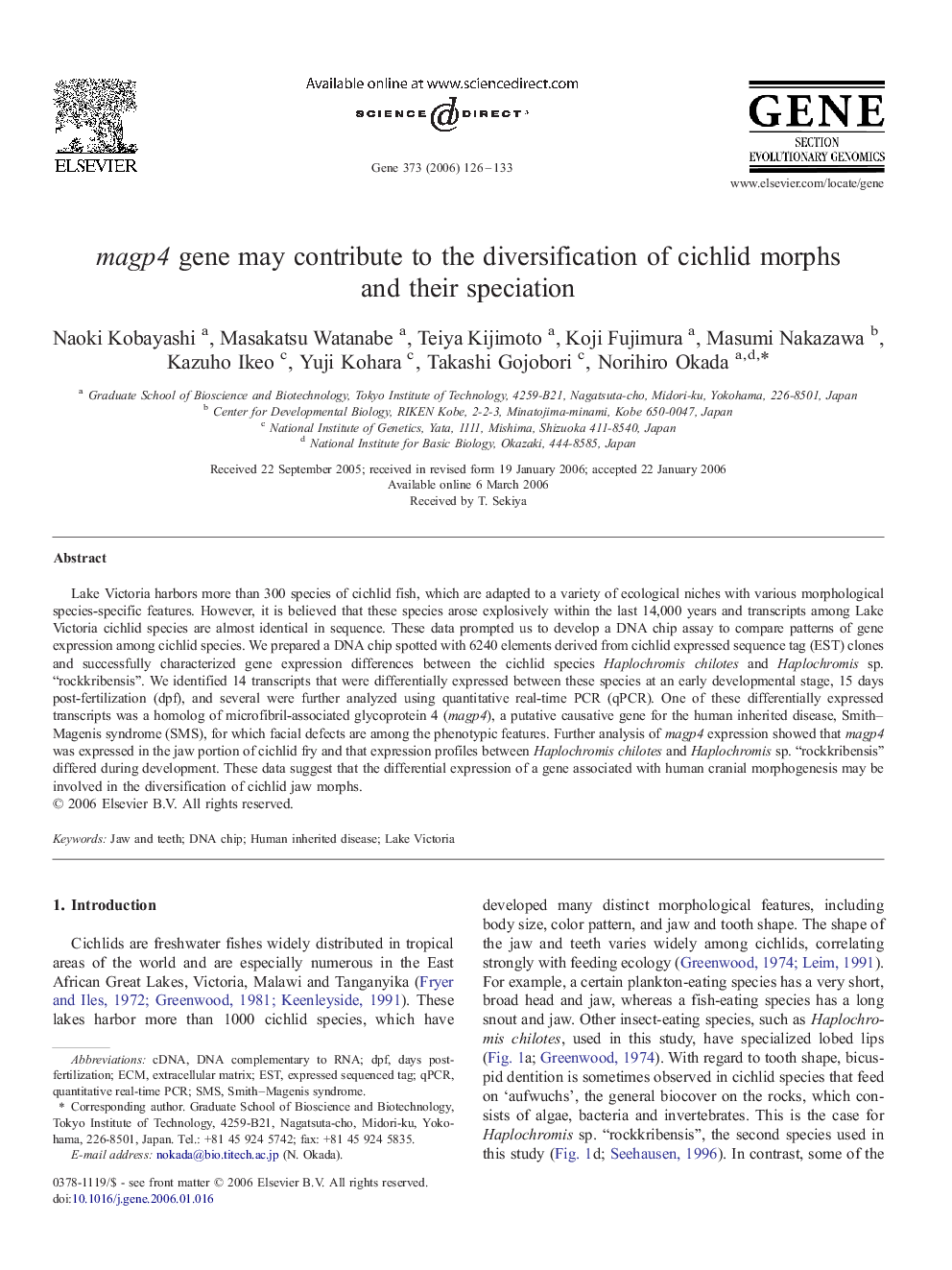| Article ID | Journal | Published Year | Pages | File Type |
|---|---|---|---|---|
| 2820326 | Gene | 2006 | 8 Pages |
Lake Victoria harbors more than 300 species of cichlid fish, which are adapted to a variety of ecological niches with various morphological species-specific features. However, it is believed that these species arose explosively within the last 14,000 years and transcripts among Lake Victoria cichlid species are almost identical in sequence. These data prompted us to develop a DNA chip assay to compare patterns of gene expression among cichlid species. We prepared a DNA chip spotted with 6240 elements derived from cichlid expressed sequence tag (EST) clones and successfully characterized gene expression differences between the cichlid species Haplochromis chilotes and Haplochromis sp. “rockkribensis”. We identified 14 transcripts that were differentially expressed between these species at an early developmental stage, 15 days post-fertilization (dpf), and several were further analyzed using quantitative real-time PCR (qPCR). One of these differentially expressed transcripts was a homolog of microfibril-associated glycoprotein 4 (magp4), a putative causative gene for the human inherited disease, Smith–Magenis syndrome (SMS), for which facial defects are among the phenotypic features. Further analysis of magp4 expression showed that magp4 was expressed in the jaw portion of cichlid fry and that expression profiles between Haplochromis chilotes and Haplochromis sp. “rockkribensis” differed during development. These data suggest that the differential expression of a gene associated with human cranial morphogenesis may be involved in the diversification of cichlid jaw morphs.
